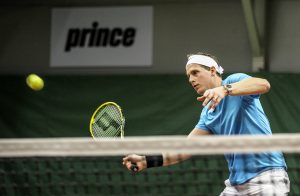As the first company we now offer a comprehensive match analysis with main focus on the serve. This analysis made Pim-Pim Johansson world record holder in serve in several categories such as fastest serve, most aces in one match, victories in two ATP-tournaments without dropping serve, and most won service games during one season on the ATP tour.
We have created a revolutionary method of analysis based on the theory from our innovative compendium If Balls Did Not Exist I Would Create One. The compendium is available for download on our web page free of charge.
We provide a template for the coach to fill in during approximately 20 of the player’s matches, after which we analyze and write a tailor made report where we highlight areas of improvement. It can be either tactical changes in match situations but also suggestions on how to optimize practice.
What made Pim-Pim such a successful server was both the stability in the serve and that he did not have any weaknesses in the serve. What makes tennis unique in comparison to other sports for example long jump is that in long jump it is the longest jump that counts, not the best shorter jump, whereas in tennis it is actually the worst service games that will decide the outcome of a match. If a player for example makes 24 aces up until a tie-break and then does not make a single first serve, the player will most likely lose the tie-break. In our analysis stability therefore plays a fundamental part.
We also analyze how the player achieves on important and unimportant points. We rank all service points from the matches that are included in the analysis to see if the player possibly underachieves on important points. The purpose of our analysis is that the player should always focus the training on what is the most important for the player’s performance. For example if a player underachieves on important points it could be because he unconsciously or consciously uses an inefficient tactics on important points. Our analysis makes the parts of the game where there is potential of improvement visible.
The most important analysis is however how to optimize speed on first and second serve. In our analysis we use published research based on game theory which have been rewarded with the Nobel Prize. The research shows that professional players would increase their prize money by at least 20 % by choosing the optimal speed on serves. Many players make the mistake of taking too little risk on the second serve and others risk too much. In our analysis we bring out facts for the individual player instead of basing training and tactics on instinct.
Another important part of our analysis is the placement of the serve. Here too tennis is a little different to other sports. A golfer can always choose to hit his favorite shot off the tee box where a tennis player cannot always serve towards the T-line if that is his favorite serve. The key to success is to know how often you can use your favorite shot and how often you have to vary the serve and hit a serve that you find more difficult to hit.
You can download the compendium If Balls Did Not Exist I Would Create One here.
